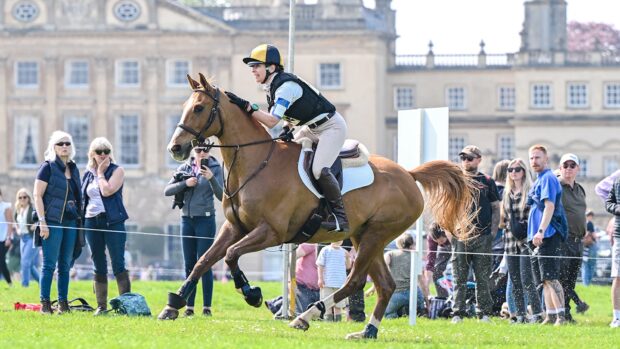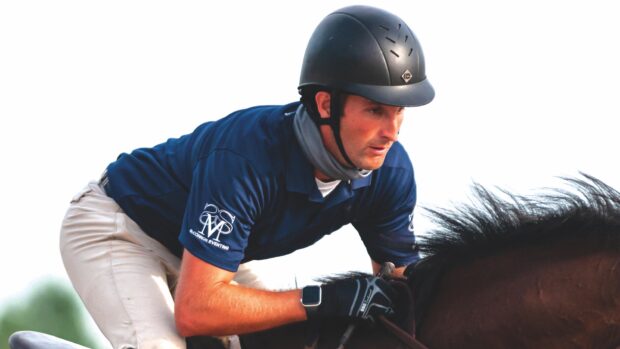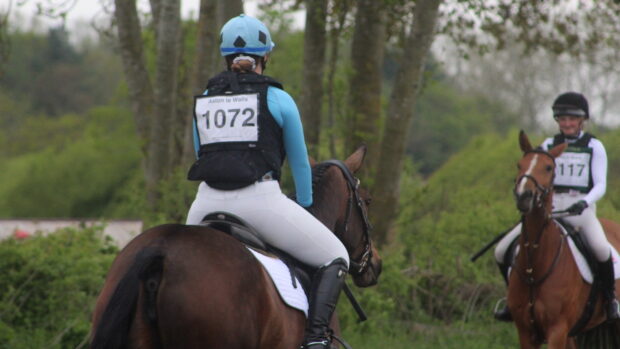Building up your horse’s cross-country confidence and experience will take several months of regular schooling.
Remember that the greater the variety of fences you meet in practice sessions, the less likely you are to meet something unfamiliar during competition.
Getting the approach right
The keywords to remember when approaching a fence are position and impulsion.
- Position: Sit up on the approach with your seat light in the saddle to help balance your horse and set his speed.
Keep your leg on and have a reasonable contact to help control your approach and give confidence to the horse.
Between fences, adopt a more forward position with your seat out of the saddle and weight down in the knees and stirrups.
- Impulsion: Impulsion is vital to help create a balanced, controlled jump, starting on the approach to a fence, set the speed at which you want to jump in plenty of time.
Impulsion within your canter stride is really a gathering together of the horse, both physically and to a certain extent mentally. This can only be achieved by creating forward propulsion with your leg and containing it with your rein in exactly the same way as you do on the flat.
The more you contain with your rein, the slower and more collected the stride becomes, but you still need to keep using your leg.
When addressing cross-country fences, the most important thing to remember is to stay balanced and give your horse more positive instructions with your legs, reins, body or voice when they are needed.
The take off
- As you jump the fence, fold slightly forwards as the horse leaves the ground but try not to go forwards before he jumps – it will not help his balance, and if he does stop for any reason, you might not!
- Give the horse enough rein to enable him to stretch as much as he wants, but don’t throw your hands forward up his neck, thereby completely dropping the contact.
- Keep your lower leg in position with your weight firmly down through your knee into the stirrup and try not to let your lower leg slip back.
In the event of your horse hitting a jump, your security on his back depends on your knee and lower leg absorbing the sudden deceleration and your body not being too far forward. It is far safer to have the lower leg slightly forwards.
Landing
‘Body back, leg forward’ is a good general rule to remember on landing.
- As the horse descends from his jump, bring your body back into a more upright position and take the jolt of the landing in your knee, which should be close to the saddle, and your feet which should be pushed down in the stirrups.
- Push your lower leg forwards slightly, especially with drop fences and fences jumped at speed – this will not only help to absorb the jolt, but it will also give you more security.
- Keep a light contact but allow him to stretch down on landing if he wants as it may help his balance.
Moving off
‘Help not hinder’ is the rule when moving off from a fence.
Keep your seat light in the saddle, with your body only slightly inclined forward, lower leg in position and a light contact on the reins. In other words, you should be completely in balance.


